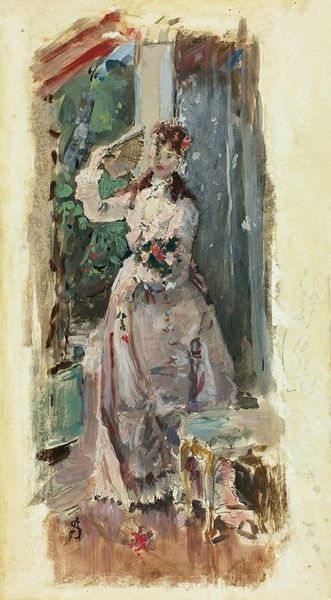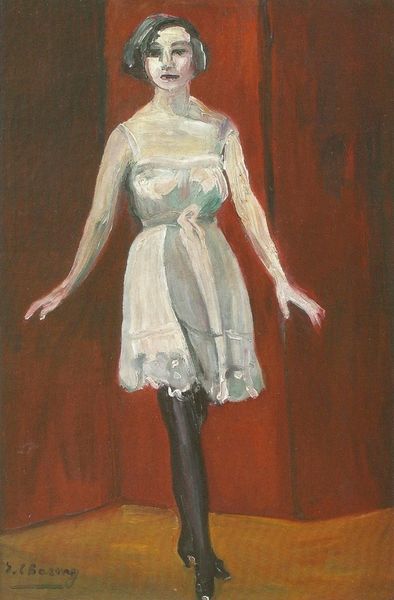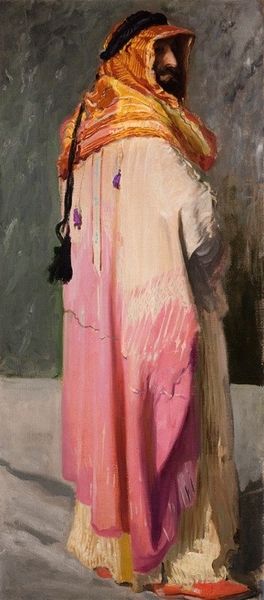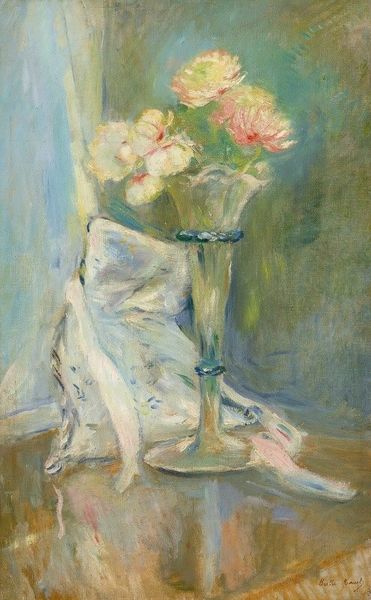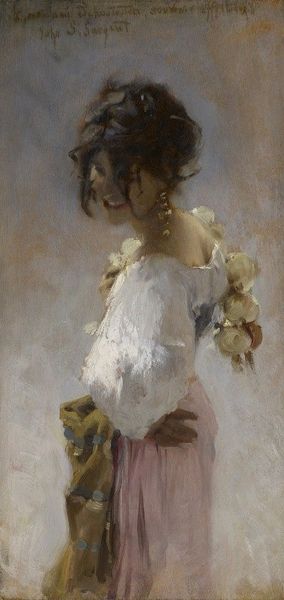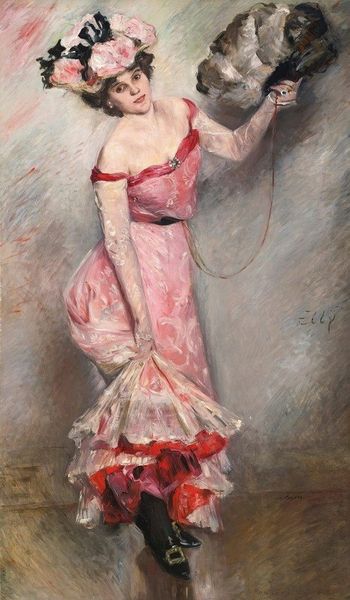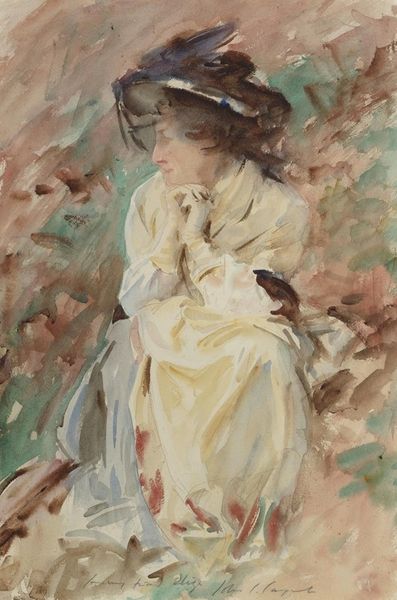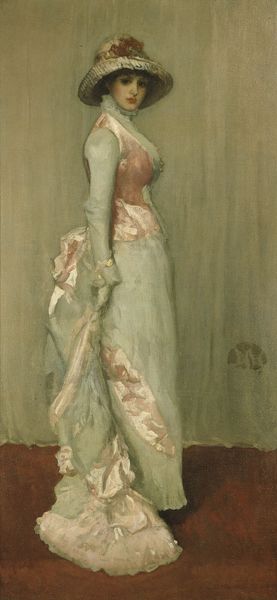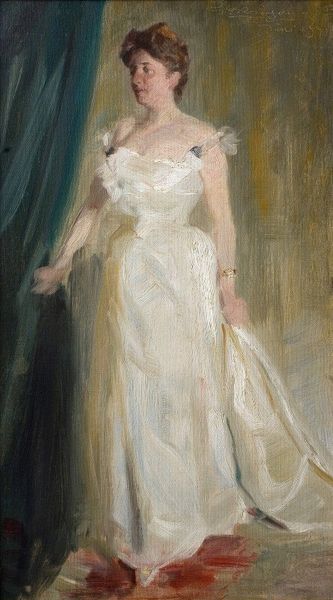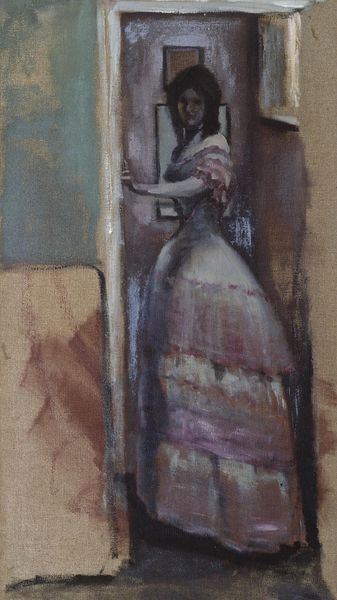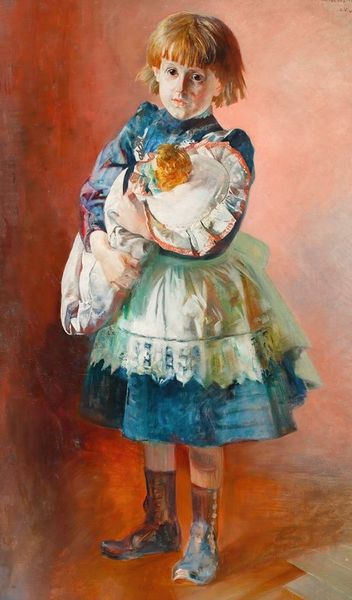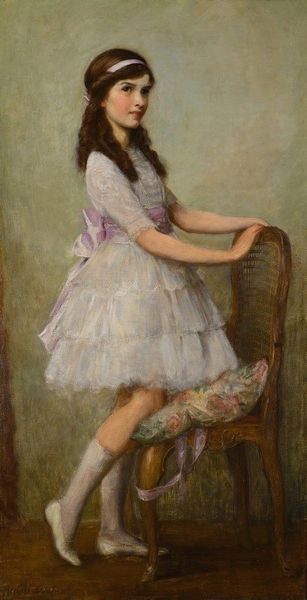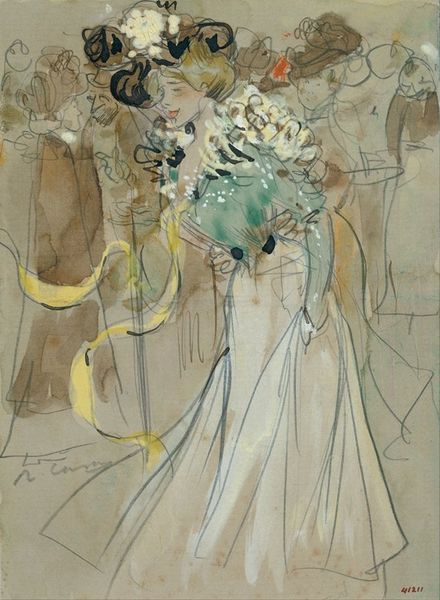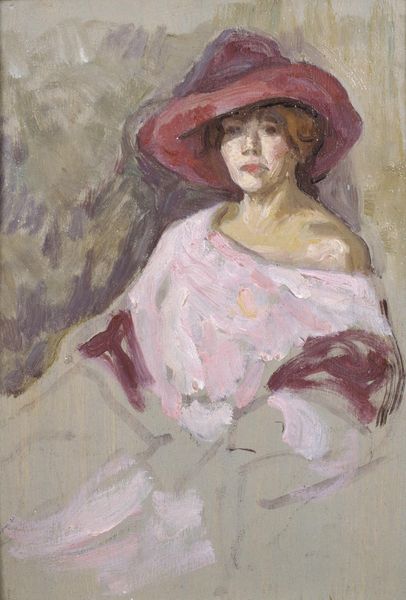
painting, oil-paint
#
portrait
#
figurative
#
painting
#
impressionism
#
oil-paint
#
glasgow-school
#
figuration
#
oil painting
#
academic-art
#
watercolor
Copyright: Public Domain: Artvee
Editor: Here we have "The Garlanded Girl," an oil on canvas work by Sir John Lavery, dating to 1896. It's quite charming; the muted colours give it a dreamlike quality. How would you interpret this piece from a formalist point of view? Curator: Note the soft brushwork and the almost ethereal quality achieved through Lavery's command of light. Consider how the artist uses colour, particularly the subtle gradations of pink and blue in the dress, to create depth and volume. The composition draws your eye directly to the figure, primarily via strategic lighting, but tell me, what’s most visually interesting for you in this composition? Editor: I’m really struck by how the flowers on her dress seem to melt into the fabric. It's hard to tell where the dress ends and the flowers begin. Curator: Exactly. Observe how the artist uses line and form to suggest rather than define. The edges are blurred; the form dissolves, almost impressionistic. In many ways this pushes boundaries with abstraction by prioritizing colours and tonal qualities. What do you think that evokes, editor? Editor: That creates a really interesting tension between the subject, which is a recognizable figure, and the overall abstract feel. Curator: Precisely. This is an artist who understands the power of suggestion, inviting the viewer to complete the image in their mind. The beauty lies not just in what is represented but how it is represented. This understanding helps to see how a very simple composition can carry a lasting visual significance. Editor: That makes me see the painting in a whole new light, especially the way form and light contribute to the overall experience. Thank you.
Comments
No comments
Be the first to comment and join the conversation on the ultimate creative platform.
